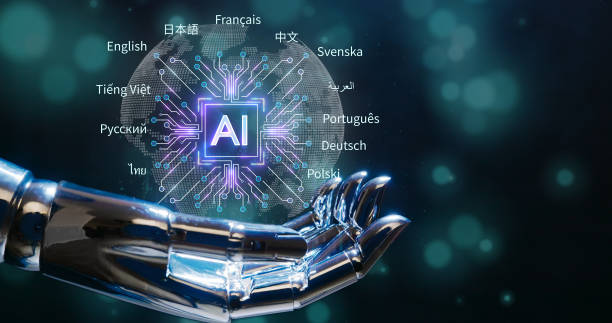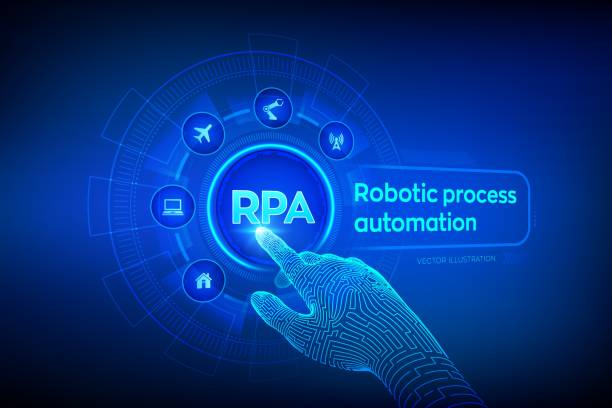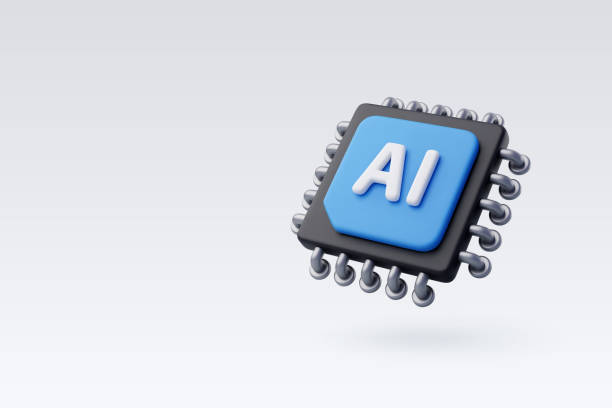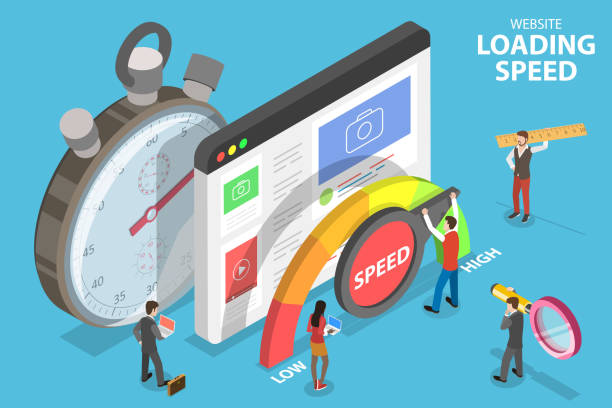AI Assistants: Introduction and Functions
In today’s world, the concept of #AI_assistant has evolved from a science-fiction idea into a tangible reality.
These advanced systems, built on #Artificial_Intelligence and machine learning, are capable of performing a variety of tasks, from answering simple questions to managing complex schedules.
An AI assistant is essentially software or a device that helps its users through verbal or text interactions.
The main goal of these smart tools is to simplify daily life and increase productivity.
By using complex algorithms and accessing vast amounts of data, they can understand commands, learn from past interactions, and provide accurate and useful responses.
These tools don’t just answer questions; they can also set reminders, play music, report the weather, and even control smart home devices.
Their ability to process natural language makes interaction very natural and intuitive for users.
In this regard, Natural Language Processing (NLP) plays a vital role, allowing the AI assistant to understand the meaning behind our words.
These technologies are constantly advancing, with new capabilities being added every day, making them an indispensable part of modern life.
This initial explanation provides a general understanding of the nature and function of AI assistants and sets the stage for deeper discussions in subsequent chapters.
How much does losing business leads due to an unprofessional website cost you? Solve this problem forever with professional corporate website design by Rasawob!
✅ Increase credibility and trust of potential customers
✅ Easier attraction of new business leads
⚡ Get a free consultation now!
How Smart Assistants Work Behind the Scenes
To understand more precisely how an #AI_assistant works, we need to take a deeper look at its #specialized infrastructure.
The core functionality of these tools is based on three main pillars: #Natural_Language_Processing, #Machine_Learning, and #Algorithms.
When you give a voice or text command to an AI assistant, the natural language processing unit first comes into play.
This unit converts your speech or text into a machine-understandable format and extracts your intent from your words.
After understanding the command, the system accesses vast databases of information, which can include general knowledge, your personal data (with permission), or information related to a specific task.
The machine learning component allows the AI assistant to learn from past interactions and improve its responses.
For example, if you repeatedly ask a certain type of question, the assistant can optimize its response method to act more accurately and quickly in the future.
This learning process involves neural networks and complex models that identify patterns in the data.
Finally, AI algorithms use all this information to generate and provide you with the best response or action.
This continuous cycle of input, processing, learning, and output ensures the intelligence and efficiency of the AI assistant.
Some of these assistants use advanced technologies such as deep learning to understand the nuances of language and conversational context, which makes interacting with them very similar to talking to a human.
Evolution and History of AI Assistants
The history of #AI_assistant is full of significant milestones, ranging from early concepts in #Artificial_Intelligence to today’s advanced products.
This remarkable #progress is the result of years of research and development in various fields of computer science.
In the early decades of AI development, ideas such as “ELIZA” in the 1960s sparked the first instances of human-machine interaction.
ELIZA was a simple computer program that could simulate conversation, although it lacked a true understanding of language.
Over time, with advancements in computational power and machine learning algorithms, subsequent generations of AI assistants emerged.
Important milestones include the development of expert systems in the 1980s and then the advent of the internet in the 1990s, which made access to vast amounts of data possible.
In the early 21st century, with progress in natural language processing and deep learning, we witnessed the emergence of voice assistants like Siri in 2011, which marked a major turning point in the public accessibility of this technology.
Subsequently, Alexa, Google Assistant, and Cortana dominated the market with more advanced capabilities and deeper integration into digital ecosystems.
These assistants are now not only responsive but also capable of anticipating user needs and performing more complex tasks.
The table below summarizes some of these important milestones:
| Year | Event/Assistant | Description |
|---|---|---|
| 1966 | ELIZA | One of the first computer programs to simulate conversation. |
| 2011 | Siri | The first widely available smart voice assistant on smartphones. |
| 2014 | Alexa | Amazon’s voice assistant with a focus on smart home devices. |
| 2016 | Google Assistant | Google’s smart assistant with extensive capabilities within the Google ecosystem. |
| 2022 | ChatGPT | Advanced large language model that revolutionized text interaction. |
These developments show how much AI assistants have evolved from their inception and become a global phenomenon.
Future advancements also promise more exciting capabilities that can transform our daily lives.
Diverse Applications of AI Assistants in Daily Life
Today, #Artificial_Intelligence assistants are more than just simple tools; they have become real helpers in our #daily_applications.
From time management to entertainment, these #assisting smart assistants play multiple roles.
In the #smart_home, they can control lights, thermostats, and other electrical appliances with just your voice command, creating a more comfortable and efficient space.
For many people, the smart assistant has become a true personal assistant that reminds them of daily schedules, sets appointments, and even compiles shopping lists.
No longer do you need to worry about forgetting anything; your AI assistant remembers everything.
In the realm of entertainment, they are capable of playing music, podcasts, and news, and can even provide information about movies, books, and artists.
For children, some of these assistants can tell stories or answer their curious questions, making learning fun.
In cars, voice assistants help drivers find routes, make calls, or send messages without needing to take their hands off the wheel, which significantly contributes to driving safety.
Even in the kitchen, an AI assistant can help you find recipes, set timers, and convert units.
These extensive capabilities have made the AI assistant an essential tool in modern lifestyle, not only simplifying tasks but also allowing us to spend more time on more important things in our lives.
Did you know that poor online store design can drive away up to 70% of your potential customers? Rasawob transforms your online store into a powerful tool for attracting and converting customers with professional and user-friendly website designs.
✅ Significant increase in sales and revenue
✅ Full optimization for search engines and mobile
⚡ [Get a free consultation from Rasawob]
AI Assistants in Industry and Business
Beyond personal applications, #AI_assistant is rapidly reshaping the landscape of #industry and #business, offering new #specialized capabilities that contribute to #productivity_increase and improved #customer_services.
In call centers, AI-powered chatbots and voice assistants serve as the first line of defense in responding to customer inquiries.
They can handle a large volume of requests 24/7, answer frequently asked questions, and even escalate more complex issues to human operators.
This not only increases customer satisfaction but also reduces companies’ operational costs.
In manufacturing sectors, AI assistants can help engineers and technicians monitor machinery, predict maintenance needs, and optimize processes.
By analyzing sensor data, they are capable of identifying patterns that may indicate an impending malfunction, thereby preventing unexpected production downtimes.
In the financial sector, AI assistants help banks and financial institutions monitor transactions, identify suspicious activities, and provide personalized financial advice to customers.
AI assistants also assist in marketing and sales departments by analyzing customer data, helping companies design more targeted and effective advertising campaigns, and improving the customer’s purchasing experience.
Even in recruitment and human resources, these assistants can play a role in screening resumes, scheduling interviews, and providing initial feedback to applicants.
These industrial applications demonstrate the immense potential of AI assistants in the digital transformation of businesses and increasing their competitiveness in the global market.
Click here to preview your posts with PRO themes ››
The Future of AI Assistants: New Horizons
Looking at the #future_of_AI_assistants is exciting and opens up new horizons of possibilities.
Future advancements in this field will exceed our current expectations, transforming these smart assistants into far more capable tools.
One significant trend is #integration_with_Augmented_Reality (AR) and Virtual Reality (VR).
Imagine your AI assistant interacting with you not only through your voice but also through a virtual environment, displaying information visually and in 3D.
This capability creates unparalleled potential, especially in the #educational, medical, and design fields.
We will also see increased personalization and predictability.
AI assistants will gradually be able to not only respond to our requests but also anticipate our needs even before we become aware of them.
For example, before you even think about buying a travel ticket, your assistant might suggest the best routes and timings based on your habits and preferences.
The convergence of AI assistants with the #Internet_of_Things (IoT) will also add new dimensions to their capabilities.
All connected devices in our homes and workplaces can seamlessly work with our AI assistant, forming a smart and synchronized ecosystem.
This convergence will make controlling and managing our surroundings much easier.
Furthermore, AI assistants will play a greater role in health and wellness in the future, from monitoring physical condition to providing personalized recommendations for diet and exercise.
These predictions indicate that the AI assistant is moving towards becoming a constant and intelligent companion in all aspects of our lives, fundamentally changing how we live.
Challenges and Ethical Considerations in AI Assistant Development
Despite all the benefits and potential of #AI_assistant, their development and widespread use come with significant #AI_challenges and #ethical_issues that require serious attention.
One of the biggest concerns is the issue of #privacy and data security.
For effective functioning, AI assistants require access to a large volume of our personal information, from search history to location data and even private conversations.
This raises serious questions about how this data is collected, stored, and used, increasing the need for strict laws and regulations to protect user privacy.
Bias and prejudice in artificial intelligence are also major challenges.
AI assistants are trained on data generated by humans, which may contain social, racial, or gender biases.
These biases can be transferred to the assistant, leading to unfair and discriminatory decisions or responses.
Click here to preview your posts with PRO themes ››
| Consideration | Explanation | Importance |
|---|---|---|
| Data Privacy | Collection and use of users’ personal information | Protecting sensitive information and preventing misuse |
| Algorithmic Bias | Transfer of human biases to AI models | Ensuring fairness and non-discrimination in decision-making |
| Transparency and Explainability | Ability to understand and explain AI assistant decisions | Building trust and enabling error tracing |
| Job Displacement | Impact of AI assistants on the job market | Need for retraining and creation of new job opportunities |
Also, questions arise regarding the transparency and explainability of AI.
How can we understand how an AI assistant arrived at a particular conclusion or answer? This issue becomes particularly important in sensitive areas such as medicine or judiciary.
The potential for job displacement is another concern; as AI assistants become more capable of performing complex tasks, some repetitive and routine jobs may be at risk.
These ethical issues highlight the need for broader dialogue and the development of strong ethical and legal frameworks to ensure the responsible and beneficial development of AI assistants.
We must address these challenges effectively and continuously to reap the benefits of this technology while minimizing potential risks.
Criteria for Choosing the Best AI Assistant for Your Needs
With the growing variety of #AI_assistant in the market, #choosing_a_smart_assistant that fits #your_needs can be confusing.
For #guidance in this process, you should consider several key #selection_criteria.
The first and most important criterion is #compatibility with your digital ecosystem.
If you use Apple products, Siri might be the best option; while for Android users and Google services, Google Assistant is preferred.
Users of Amazon Echo devices usually choose Alexa.
Next, think about the specific capabilities you need.
Do you need an assistant to control your smart home or primarily for managing your calendar and daily tasks? Some assistants are stronger in a specific area, for example, Alexa excels in integration with smart home devices.
The level of privacy protection and your control over your data is also a crucial factor.
Review the privacy policies of different companies and see how transparent they are and what options they give you for managing your personal data.
User experience and ease of use are also highly important.
A good AI assistant should have an intuitive interface and respond to your commands quickly and accurately.
Also, pay attention to the quality of its natural language processing; the better the assistant can understand your intent, the better your user experience will be.
Support for different languages and accents is also very important for non-English speaking users.
Finally, consider the developer ecosystem and the ability to add new skills and extensions.
An AI assistant with high extensibility can adapt to your needs in the future.
By considering these criteria, you can choose an AI assistant that best suits your lifestyle and needs and provides you with an optimal user experience.
This analytical approach will help you make an informed decision.
Are you frustrated with the low conversion rate of your online store? Rasawob transforms your online store into a powerful tool for attracting and converting customers!
✅ Significant increase in visitor-to-buyer conversion rate
✅ Excellent user experience for increased customer satisfaction and loyalty⚡ Get a free consultation from Rasawob!
Key Tips for Effective and Optimal Interaction with AI Assistants
To fully utilize the potential of your #AI_assistant, you need to have #effective_interaction with it.
This chapter provides you with #key_tips and #educational guidance to improve this interaction and increase your #productivity.
The first step is to use clear and precise #voice_commands.
Although AI assistants have made significant progress in understanding natural language, accurate words and clear phrasing still help them better understand your request.
Try to avoid vague terms and state your commands completely and without rushing.
The second tip is to personalize the AI assistant.
Many of these assistants offer personalization options, such as setting the assistant’s name, choosing a preferred voice, or privacy settings.
These customizations can make your user experience more pleasant.
Learning new commands and skills is also crucial.
AI assistants are constantly updated with new capabilities.
By exploring settings and support websites, you can discover new skills that can be useful in your daily tasks.
Using specific keywords to activate particular features (like “Hey Siri,” “Ok Google,” or “Alexa”) is also important.
Also, be patient.
Sometimes the AI assistant may misunderstand your request or give an incorrect answer.
In such cases, try to phrase your request differently or use simpler commands.
Providing feedback to developers can also help improve the assistant’s performance in the future.
By giving feedback on incorrect or inefficient responses, you contribute to the machine learning process.
Finally, remember that the AI assistant is a tool.
Its purpose is to help you, not to completely replace human interaction.
By using these guidelines intelligently and consciously, you can make the best use of your AI assistant and make your life easier and more efficient.
Click here to preview your posts with PRO themes ››
The Transformative Impact of AI Assistants on Society
The #AI_assistant is not just a technological tool, but a phenomenon with a #transformative_impact on society and our #future_life.
This technology, with its #pivotal_role, is reshaping how we work, live, and interact socially.
From a social perspective, AI assistants can help reduce the burden of routine and repetitive tasks, giving individuals the opportunity to focus on more creative and meaningful activities.
This can lead to an increase in quality of life and job satisfaction.
For individuals with physical disabilities, the AI assistant is an incredible helper, enabling them to control their environment and access information, thereby increasing their independence.
In the field of education, AI assistants can act as personal tutors, personalizing #educational content based on each individual’s learning pace and style.
This personalized approach can lead to improved learning outcomes and equal access to education for all.
In the entertainment dimension, these assistants not only help play content but also, by analyzing our interests, provide personalized suggestions for movies, music, and books, which can enrich our entertainment experience.
The impact of AI assistants on the economy is also significant.
By increasing productivity across various industries, these assistants can lead to economic growth and the creation of new job opportunities in AI development and maintenance.
However, as previously discussed, intelligent management of labor market changes is also necessary.
Ultimately, the AI assistant is moving us towards a smarter and more connected society where information is readily available and complex tasks are easily accomplished.
This digital transformation and the widespread adoption of AI assistants promise a future where technology will truly serve to improve human quality of life and guide us towards a society with unprecedented capabilities.
Frequently Asked Questions
| No. | Question | Answer |
|---|---|---|
| 1 | What is an AI assistant? | An AI assistant is a software program that uses artificial intelligence to help users perform various tasks, provide information, or automate processes. |
| 2 | What are examples of AI assistants? | Well-known examples include Siri, Google Assistant, Alexa, and Cortana. |
| 3 | How does an AI assistant work? | AI assistants typically use Natural Language Processing (NLP) to understand user voice or text commands and machine learning to improve their performance. |
| 4 | What capabilities does it have? | Capabilities include answering questions, setting reminders, playing music, sending messages, controlling smart devices, and providing weather information. |
| 5 | How is data security handled in AI assistants? | Data security is a major concern. Companies strive to protect user data using encryption and privacy policies, but users should always be aware of potential risks. |
| 6 | Can AI assistants understand emotions? | Currently, AI assistants cannot understand true emotions, but they can detect tone and words related to emotions and provide appropriate responses. |
| 7 | What are the applications of AI assistants in the workplace? | In the workplace, they can be used for scheduling meetings, managing emails, searching for information, and even assisting with drafting documents. |
| 8 | What will the future of AI assistants be like? | In the future, they are expected to be smarter, more personal, and have more capabilities, actively anticipating user needs and even assisting with complex decision-making. |
| 9 | What is the difference between an AI assistant and a chatbot? | An AI assistant usually has a broader range of capabilities and interactions (often voice-based), while chatbots are typically focused on specific tasks within a text-based platform. |
| 10 | How can one best use an AI assistant? | For optimal use, one should become familiar with its voice commands and capabilities, synchronize it with other devices, and allow it to learn your usage patterns through interactions. |
And other services of Rasawob advertising agency in the field of advertising
Smart UI/UX: A new service to increase click-through rates through key page optimization.
Smart Advertorials: A combination of creativity and technology for online growth through custom programming.
Smart Content Strategy: A combination of creativity and technology to increase click-through rates through SEO-driven content strategy.
Smart Custom Software: An effective tool for online growth by using real data.
Smart Data Analysis: Transform SEO ranking improvement with marketing automation.
And over hundreds of other services in internet advertising, advertising consultation, and organizational solutions
Internet Advertising | Advertising Strategy | Advertorials
Sources
The role of AI assistants in the future of life
Artificial intelligence and its impact on daily life
The evolution of AI assistants and their position
Artificial intelligence and the future of work: challenges and opportunities
? Ready for sustainable growth and prominence in the digital world? Rasawob Digital Marketing Agency, with its expertise in providing comprehensive services including SEO-optimized website design, Search Engine Optimization (SEO), and targeted advertising campaigns, is your reliable partner on the path to online success.
📍 Tehran, Mirdamad Street, next to Bank Markazi, Southern Kazeroon Alley, Ramin Alley, No. 6













